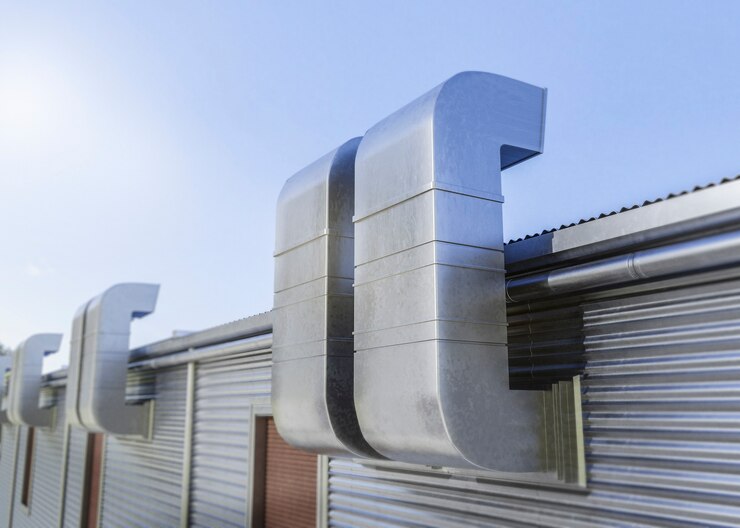In aerospace engineering, each component is crucial for aircraft safety, efficiency, and performance. Ducts serve as critical channels for air, fuel, and other fluids vital to diverse aircraft systems. Choosing duct manufacturers for aerospace endeavors demands thorough attention to ensure top-notch quality, reliability, and adherence to industry standards. This article explores the five crucial factors in making informed decisions regarding duct selection for aerospace projects.
1. Certifications and Compliance
In the intricate world of aerospace engineering, safety and integrity are critical. The choice of duct manufacturers relies significantly on their adherence to rigorous regulations and standards. As such, a pivotal factor in selecting duct manufacturers is their certifications and compliance with relevant aerospace regulations. The ideal manufacturer should boast certifications such as AS9100, tailored explicitly to the aerospace sector, signifying a commitment to stringent quality management standards. Furthermore, compliance with industry-specific regulations, such as those set forth by the Federal Aviation Administration (FAA), is imperative to ensure that ducts meet the stringent safety and performance criteria essential for aviation applications. These certifications and compliance measures assure the manufacturer’s dedication to upholding the highest quality and safety standards in aerospace engineering.
2. Experience and Expertise
Experience is a beacon of reliability and proficiency in the dynamic landscape of aerospace engineering. When evaluating duct manufacturers, the depth of their knowledge and expertise in designing and producing ducts for aerospace applications emerges as a critical consideration. An established manufacturer with a proven track record in the aerospace sector is invaluable. They bring the technical know-how and capabilities required to deliver top-tier ducts that align seamlessly with the exacting demands of aircraft systems. Moreover, manufacturers with extensive experience often possess a subtle understanding of industry-specific challenges and innovations. That empowers them to offer custom solutions tailored to the unique requirements of each aerospace project. This depth of experience does not only inspire confidence. It also fosters a collaborative environment where manufacturers can proactively address challenges and drive innovation in aerospace engineering.
3. Material Selection and Compatibility
Selecting the appropriate materials for duct manufacturing is pivotal in determining the final product’s effectiveness, durability, and safety. In aerospace, ducts are exposed to harsh conditions, including elevated temperatures, varying pressure differentials, and exposure to corrosive elements. For that reason, the meticulous choice of materials becomes imperative to uphold high performance and durability.
Duct manufacturers should offer various material options, including stainless steel, titanium, and composite materials. Their proficiency lies in skillfully matching materials to specific applications, factoring in considerations such as temperature resilience, weight optimization, and compatibility with other aircraft components. This strategic selection process ensures robust performance and prolonged service life under demanding operational environments.
4. Customization Capabilities
Aerospace endeavors often demand tailor-made duct solutions carefully crafted to suit specific aircraft configurations and system requisites. Assessing their expertise in customizing is an important thing to do, when evaluating potential duct manufacturers.
An esteemed manufacturer boasts the capacity to deliver bespoke duct solutions precisely aligned with each project’s unique requirements. Such tailored offerings confer notable advantages, including heightened operational efficiency, superior performance, and seamless integration with other aircraft systems. That entails the adept design of ducts featuring intricate geometries, exacting dimensions, and integrated functionalities. These aim to optimize airflow dynamics, minimize weight burdens, and boost overall aircraft performance.
5. Quality Assurance and Testing
In aerospace manufacturing, prioritizing quality assurance is non-negotiable. It serves as the backbone for risk mitigation, ensuring persistent consistency and upholding the highest quality levels and safety standards. Thorough scrutiny of manufacturers’ quality assurance protocols is indispensable when venturing into the world of duct selection.
Established manufacturers boast a robust suite of quality control measures deployed at every point of the manufacturing cycle. That spans from thoroughly inspecting raw materials to the intricate fabrication processes, culminating in meticulous assembly and testing phases. These stalwart entities harness cutting-edge, non-destructive testing methodologies like ultrasonic and X-ray inspections to unearth potential flaws or anomalies.
Manufacturers undertake rigorous performance evaluations under simulated operational scenarios. This diligent testing regimen validates adherence to stringent performance benchmarks and regulatory mandates, enhancing trust and confidence in the ducts’ reliability and effectiveness in supporting critical aircraft systems, including aircraft engine valves assemblies.
Conclusion
Choosing the ideal duct manufacturer is a critical decision that can significantly impact the success and safety of aerospace projects. By carefully considering factors such as certifications, experience, material selection, customization capabilities, and quality assurance, aerospace engineers can ensure that they partner with manufacturers capable of delivering high-quality ducts that meet the stringent requirements of the aerospace industry. Ultimately, investing in the ideal duct manufacturer is an investment in the reliability, efficiency, and performance of aircraft systems, contributing to the advancement of aerospace technology and air travel safety.
